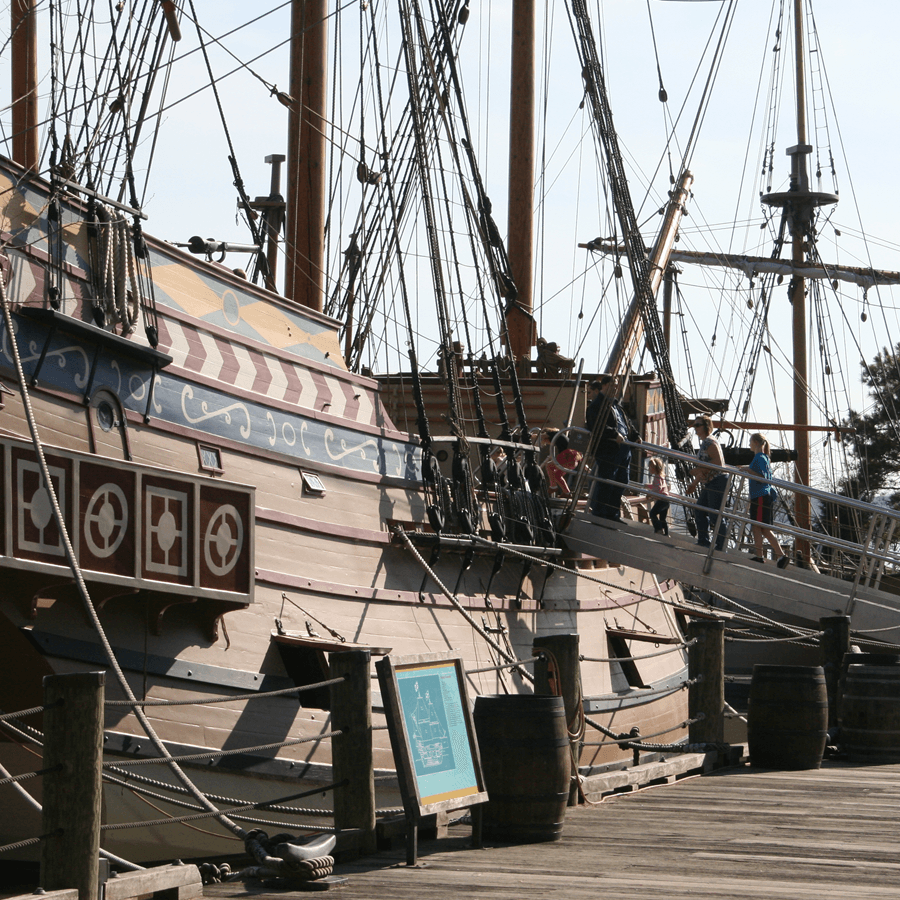Explore Jamestown, VA
Past and Present

In May 1607, three London Company ships landed at Jamestown Island, hoping to find riches. The island, about 2 miles long and 1 mile wide, seemed defensible, but much of it was marshy, breeding mosquitoes. The settlers struggled with brackish water, leading to sickness, and faced hostility from the local Paspahegh Indians. Despite these challenges, Jamestown became the first permanent English settlement in the New World. Today, there is no formal city, but visitors can explore the original fort and settlement. Maintained by the National Park Service, the site offers attractions and things to do, see & learn, including archaeological insights, a recreated fort, replicas of the ships, an Indian village, and galleries detailing the history of the Jamestown experiment
"Our biggest problem was we were only here for 2 nights. It just really was not enough time to do everything we wanted. Already planning our next trip and will only consider staying with you!"
~ Judith K

Jamestown Past
The 2-mile long Island for Early Settlers
In May of 1607 three London Company ships landed at Jamestown Island in hopes and anticipation of finding riches. Things did not turn out quite like they planned. The island itself was a pear shape about 2 miles long and a mile wide. Surrounded by water and located some 60 miles inland from the ocean, they felt it would be fairly defensible. Game, fish, and trees (for lumber) appeared to be in abundance. They would soon discover much of the island was marsh, in which swarms of enormous mosquitoes would breed. They found no fresh water springs and the shallow wells they dug would yield brackish salty water similar to the water that flowed right off shore in the James River. This lack of good drinking water contributed much sickness in the group. It did not take long for the local Native Americans (the Paspaheghs) to determine they did not care much for these strangers who were setting themselves up in their territory. Despite all the enormous challenges faced, this little foothold the British made in the Americas would continue on to become the first permanent English-speaking location in the new world.

Jamestown Present
Spend the Day Engulfed in History
There is no formal city or town there today, but you can spend a good part of the day visiting the site of the original fort on the Island and then stopping by the Settlement. You can get there from Williamsburg by following Jamestown Road (Route 31), but the best drive is via the Colonial Parkway.
Jamestown Island is maintained by the National Park service and has a tremendous team of archeologists and interpreters that will help you understand the digs at the site of the original fort, early years of the settlement, and the artifacts that have been removed (over 1.5 million and counting).
The settlement about ½ mile away is the location of several historic sites: the recreated fort, replicas of the 3 ships, a Native American village, and some incredible galleries that will help you understand the British urge to come here, a little more about the natives that lived here during that time, and the final gallery that will give you detailed and in-depth information about the Jamestown experiment.
